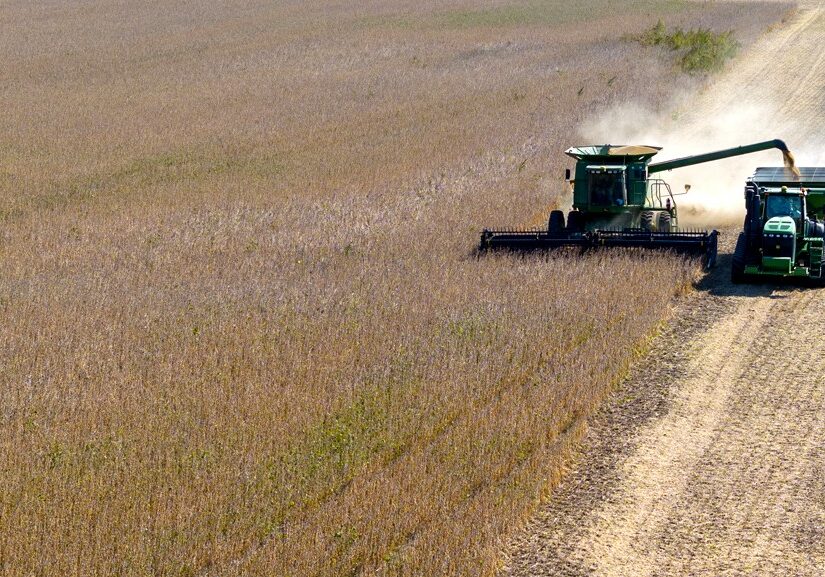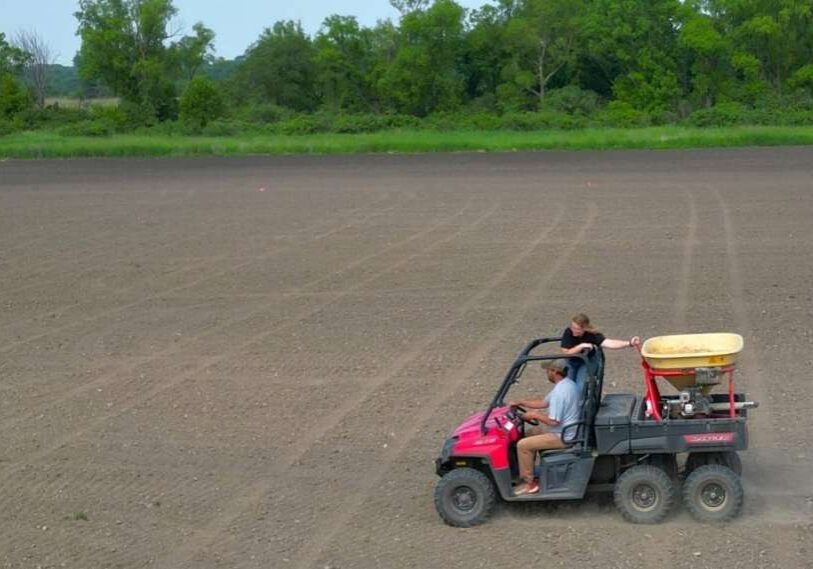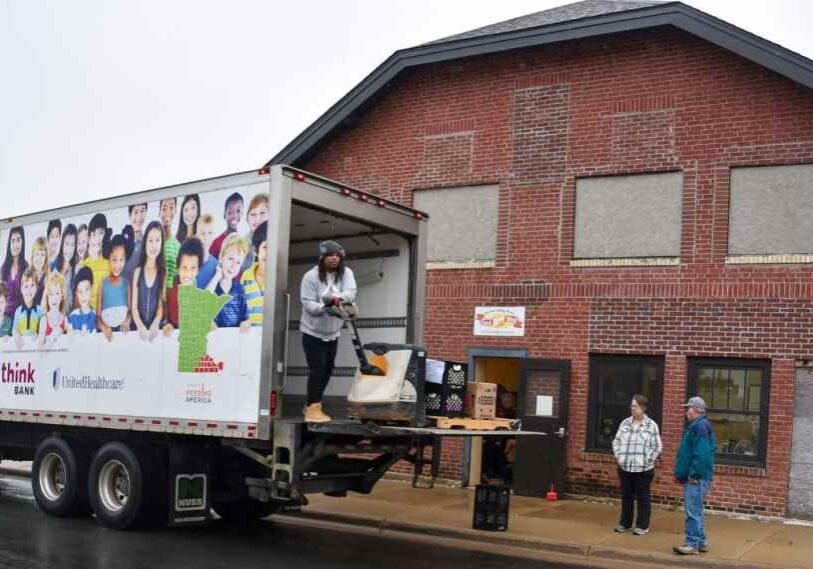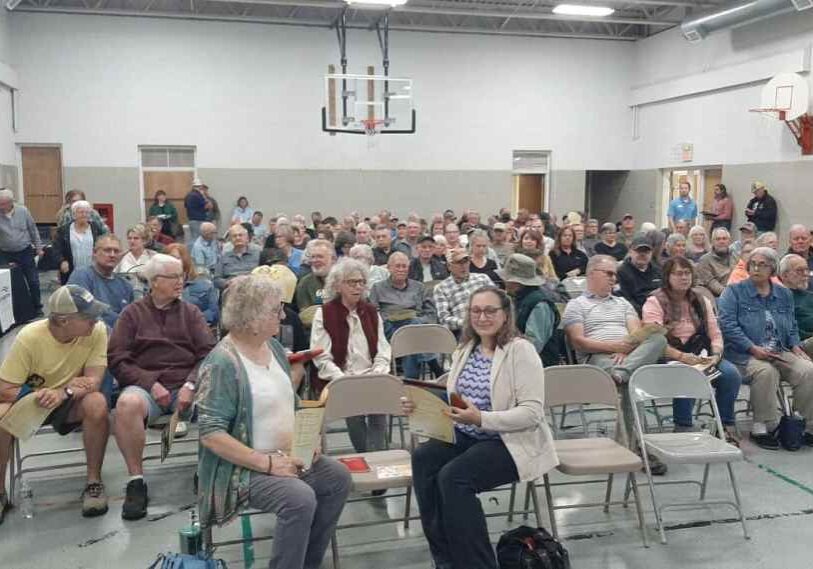Internet for All

(VIRTUAL) MINNESOTA — We’ve all been there: that critical virtual meeting starts in 2 minutes and all you see is the buffering circle with the dreaded “unstable internet connection” message. Whether it’s building a business from your small farm; trying to keep up with family; or remotely accessing the classroom, unreliable internet is a common frustration for rural residents.
Hope is on the horizon, though, as Minnesota ramps up its already ambitious plan to bridge this connection gap.
Today in Minnesota, nearly 224,000 rural homes and businesses are without broadband capability.1 As with earlier efforts to modernize electricity and water utilities, the State of Minnesota has committed to bringing reliable and functional internet to everyone. And with new and increased funding from both the state and federal government, the goal of border-to-border internet accessibility is within reach.
Miles to go before we’re done
Bringing quality internet to every home and business is not a new effort in Minnesota. Working with broadband developers through its “Border-to-Border” grant program, Minnesota has distributed nearly $296 million to connect more than 103,000 homes and businesses since 2014. The challenge now is to finish those last miles of terrain that are difficult to navigate or excavate or too widely separated to connect efficiently.
This last mile got a welcomed injection of funding in 2023 with over $752 million in state and federal dollars:
- $100 million from the State of Minnesota allocated in its biennial budget
- $652 million from Broadband Equity Access and Deployment (BEAD), part of the National Telecommunications and Information Administration (NTIA). In total the federal government allocated $65 billion to federal broadband funding as part of the Bipartisan Infrastructure Law passed by Congress in 2021.
These funds not only bring connectivity to Southeast Minnesota but provide good-paying jobs and ongoing opportunity for small businesses. Fillmore County is home to two current projects with more than $3 million dollars allocated to rural Preston and Fountain. Through a partnership with the Harmony Telephone Company and MiBroadband, 379 homes, businesses, and farms will gain connection to high-speed internet.
Broadband is more than streaming the Latest hit show
For the majority of Minnesotans, jumping on the internet is now second nature and with just a push of a button they can easily manage everything online. Banking and grocery shopping, building a small side hustle, or even having a quick telehealth check-up without ever having to leave home. During Covid shutdowns, we saw the need starkly as education went completely online, leaving those without internet access parked in places with free wi-fi just to attend school.
The digital equity divide has widened even more as high-speed internet has become crucial to basic, daily tasks. According to the United Soybean Board, nearly 60% of U.S. farmers do not have adequate connectivity. This not only hampers their family’s connection but it keeps them from implementing sustainable practices, using modern equipment, and building niche businesses in emerging markets.
The divide, too, is not always due to physical access. The expense of modern equipment and the cost of monthly internet service is unattainable for many low-income families. Bridging this gap is also part of the newest push for accessibility and multiple programs are available through the State of Minnesota for rebates on internet service, refurbished computer equipment, and more. (Find more information here.)
“Broadband helps students, workers, and businesses get ahead. It gives Minnesotans access to health care information and government resources,” says Bree Maki, Executive Director of the Office of Broadband Development (OBD). “It helps us stay connected to the people who matter most. Simply put, it is a necessity.”
Contained in the federal funding, $2.75 billion is specifically allocated for the Digital Equity Act and each state must submit a plan to NTIA detailing how it will spend its allocation. Minnesota’s Digital Equity Program plan is being formulated through public input gained during OBD’s statewide visits and other research efforts.

Bree Maki, Minnesota Office of Broadband Development Executive Director. (Submitted photo)
Piecing it all together
While Minnesota and private partners have been working on this for many years, these large funding amounts have pushed the work into high gear, creating a complex project with dozens of private partners. The OBD is part of Minnesota’s Department of Employment and Economic Development (DEED) and is managing it all through a wide range of business-, community-, and individual-level programs.
We talked with the Executive Director, Bree Maki, who shared her vision for the next few years.
What led you to take on this job at this challenging point in its progress?
I am very honored to be appointed by Governor Walz and Lt. Governor Flanagan to serve in this role. Broadband expansion is a key goal of their administration and DEED. This is a pivotal time for broadband infrastructure and inclusion in Minnesota and the nation. I am incredibly honored to be able to serve Minnesota in this role and I am firmly committed to advancing broadband access, quality, and affordability across the state.
I was appointed to this role in the fall of 2022. Leaving my previous position as senior outreach director and state broadband telecommunications director with Senator Tina Smith was difficult but knowing that I am working off a foundation and legacy she was part of was a “full circle” moment. Before my role with Senator Smith, I was an office administrator for the Winona County Soil and Conservation District.
I still live in Southeastern Minnesota and I believe Greater Minnesota is a great place to live and work. My own team is diversely located, and we are able to attract and retain talent because I believe in the ability to telecommute. This will allow for growth across the state. Even my staff of 11 people (hiring two more) are geographically dispersed across the state.
What do you see as the biggest bonus of this expansion in rural Minnesota?

High school Junior, Nick Fryer, logs on for a school day during Covid-19 shutdown. (Photo courtesy of Julie Fryer.)
We know that historically Greater Minnesota is the hardest and most expensive to serve with adequate broadband access because homes and businesses tend to be more spread out and dispersed.
Having adequate broadband will allow people to live, work, be educated and thrive wherever they choose to live and work in Minnesota. We are excited to support this and we hope our small communities in Southeast Minnesota and across the state can thrive because of it.
What will you consider success a year from now? Five years from now?
The state’s goal is to reach everyone with a service capable of delivering 100Mbps download/ 20Mbps upload by 2026. Minnesota continues to invest in Border-to-Border Infrastructure Projects toward achieving that goal. In October 2023, we will launch our next round of project grants totaling $50 million for broadband projects around the state.
This competitive matching-fund grant program is designed to act as a catalyst to public and private investments in broadband infrastructure in unserved and underserved areas of the state. Typical grantees include large and small telephone companies, cable operators, electric cooperatives, tribal entities, and local governments (in partnership with private providers). We know we will invest in projects across the state that will help communities and families thrive.
What can rural communities do to help with this effort or request help?
OBD traveled around the state throughout September seeking public input on the state’s Digital Opportunity Program draft plan, which outlines how the state will address gaps in digital technology ownership and skills. This is also an important measure to ensure Minnesotans not only have access, but also the tools, resources and skills to achieve their digital technology goals. Input from communities across Minnesota will help make this plan stronger and more Minnesota-focused.

Construction crew workers deploying fiber to connect homes and businesses in Harmony to high speed internet. (Photo courtesy of MiBroadband)
What can rural residents expect to happen and how will they know when their area is slated for construction?
With the Internet for All — which is the overarching title of federal investment to expand and upgrade America’s high-speed internet networks – each state must look at its respective FCC maps and identify communities that are unserved with broadband. All unserved communities need to be served with the federal funding we receive. However, we know that FCC maps are not 100% correct and more locations in the state may not be served as recorded by the FCC. Additionally, Minnesota’s state statutory goals differ from FCC/NTIA criteria for served speeds so we will have to determine how to address these variations.
At this time, we do not know which broadband service providers will be willing to go where. However, we do know the goal is that everyone in the state has at least one good provider option and access to high quality service. We are also fortunate in Minnesota that ALL providers are trying to achieve the goal of access to all Minnesotans. How that is done is competitive, but also thoughtful. Together with local representatives, they’ve done a good job of working with communities to determine need and inform them of the progress.






